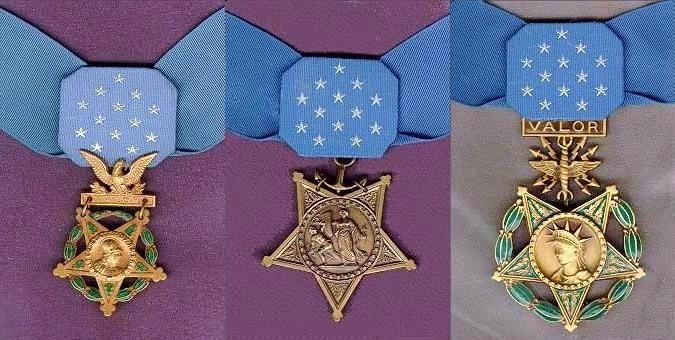
Today is America’s National Medal of Honour Day, and it was on this day in 1863 that the Medal of Honour was presented to recipients for the first time. In December 1861, shortly after the American Civil War began, Congress authorised the distribution of medals of honour to petty officers, seamen, landsmen and marines that distinguished themselves through their bravery in action and other heroic qualities during the war. Two months later, this was extended to Privates in the United States Army, and it was here that the Medal of Honour was born.
The first Medals of Honour were presented by Secretary of War Edwin Stanton to six of the surviving members of Andrew’s Raiders on 25 March 1863 (the Andrews Raid of 12 April 1862 brought the first Union soldiers into North Georgia and led to the only locomotive chase of the Civil War. Involving two-dozen men, it ended in failure). While these were the first medals to actually be presented, the first heroic act for which it was presented occurred in February 1861, when Army Assistant Surgeon Bernard J.D Erwin rescued 60 soldiers at Apache Pass, Arizona.
Between 1863 and 1917, more than 3,000 Medals of Honour were presented for acts of bravery between the Civil War and the First World War. However, a ‘purge’ took place in 1917 that stemmed from a concern that the Medal of Honour was losing its prestige due to the lack of a clear criteria for its presentation. As a result, 911 names were stricken from the Honour Roll.
Since its inception, 3,475 Medals of Honour have been presented to 3,447 recipients. It remains the United States’ highest military award.
